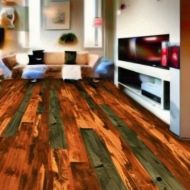Are you looking to revitalize the aesthetic of your home without breaking the bank? One great way to...
The Benefits of Hiring a Professional Hardwood Floors Installer
Experience You Can Trust: A professional hardwood floors installer will have the expertise and experience necessary to install...
What You Need to Know About Grit Trap Cleaning
What is Grit Trap Cleaning? Grit trap cleaning involves removing accumulated sediment from the traps to ensure that...
